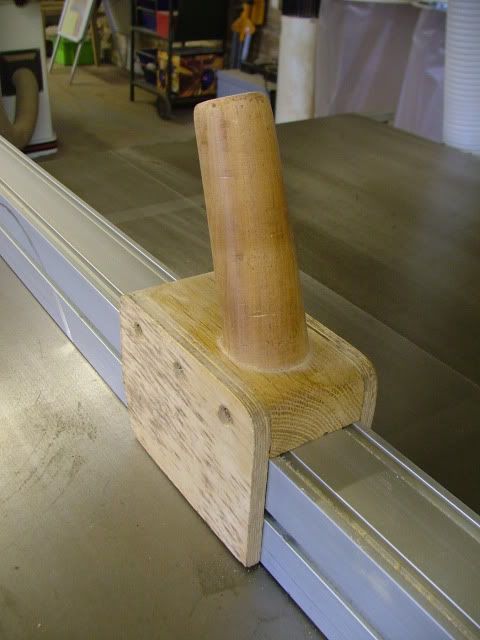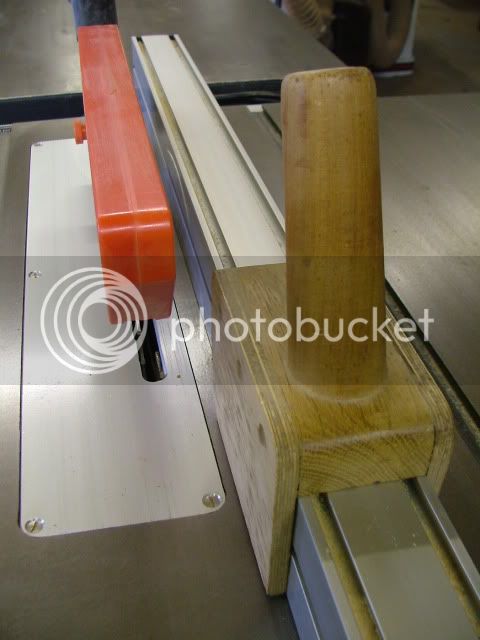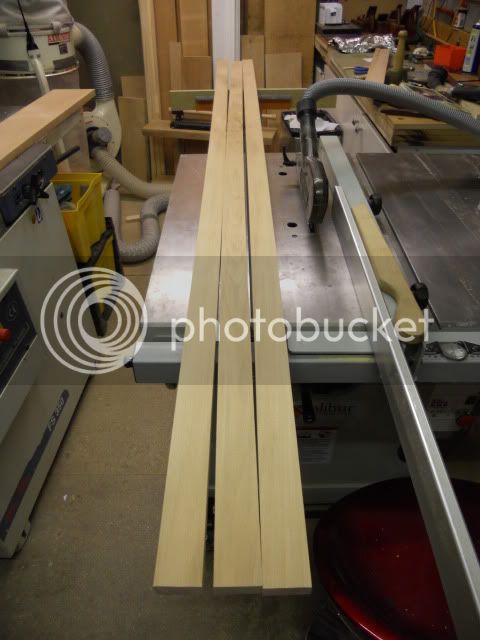Dodge
Established Member
In my other thread regarding my workshop a few people pm'd me about the push stick they spotted on my table saw so here it is!
Basically two offcuts of birch faced ply with a spacer between them the marginally wider than the side fence meaning that it slides freely - the handle enables it to be pushed easily whilst the angled cut at the leading edge of the birch faced ply also ats as a hold down for the material being passed through the saw.
My main reason for making it was that I hate using push sticks when cutting thin strips as your hand is effectively pushing directly towards the blade with a conventional push stick - with mine your hand is to the side over the fence.



Rog
Basically two offcuts of birch faced ply with a spacer between them the marginally wider than the side fence meaning that it slides freely - the handle enables it to be pushed easily whilst the angled cut at the leading edge of the birch faced ply also ats as a hold down for the material being passed through the saw.
My main reason for making it was that I hate using push sticks when cutting thin strips as your hand is effectively pushing directly towards the blade with a conventional push stick - with mine your hand is to the side over the fence.



Rog



































